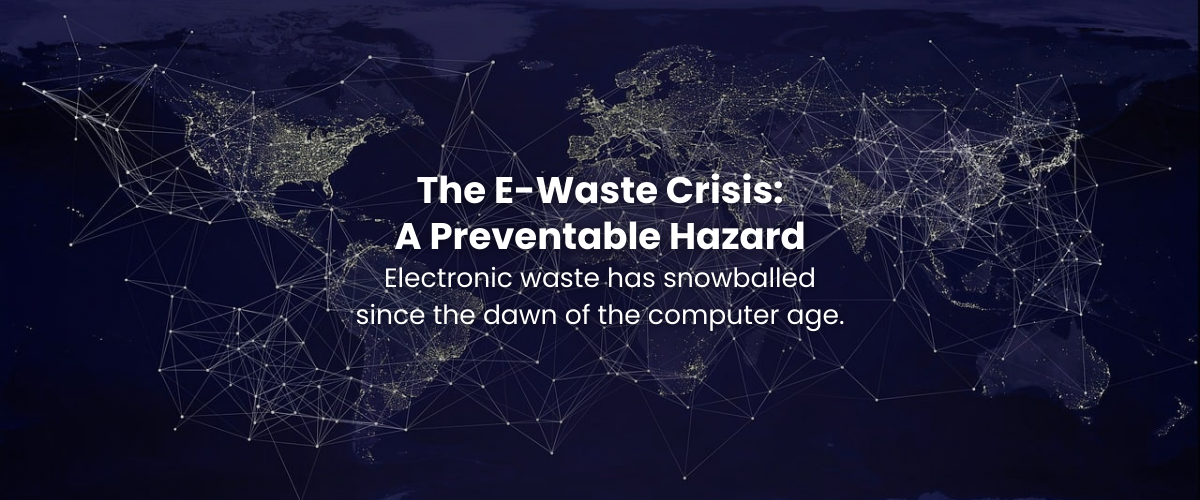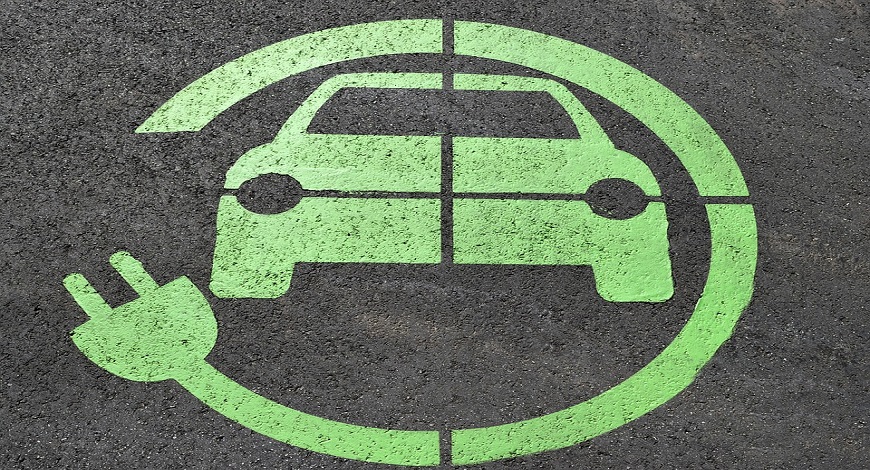
The e-waste crisis is a growing problem with far-reaching environmental and economic impacts, that has been snowballing since the dawn of the computer age. This problem has accumulated something of a critical mass as of today, and as the world races to Net Zero and Zero Waste, eWaste is under more scrutiny than ever, and with good reason.
According to the World Health Organization, E-Waste is the fastest-growing type of solid waste in the world. In 2019, only 17.4% of e waste was documented as formally collected and recycled. Battery waste from all sources (EVs, consumer electronics, others) is estimated to comprise around 15% of all E Waste.
Previously, we’ve talked about how a Circular Economy is a gateway to a realistic and feasible utopia, primarily from the perspective of batteries and the circular supply of energy transition materials that battery recycling can produce. This edition of LOHUM #GreenGazette overviews the larger field of e-waste, why this budding crisis needs attention, and what is the solution. (Spoiler: it’s Recycling.)
According to a 2019 report featured on Statista, e-waste primarily comes from small electronic equipment, large electronic equipment, temperature exchange or regulation equipment, screens and monitors, and small IT & telecom equipment encompassing consumer electronics, and lamps. These varieties of e waste may contain metals, glass, plastic, and other composite materials including those found in batteries.
(At 17.4 Metric Tonnes as of 2019)
(At 13.1 Metric tonnes in 2019)
(At 10.8 Metric Tonnes in 2019)
(At 6.7 Metric Tonnes in 2019)
(At 4.7 Metric Tonnes in 2019)
(At 0.9 Metric Tonnes in 2019)
While a definitive percentage-based order of pollutants in e waste is challenging due to varying compositions and methodologies, here’s a general breakdown of common pollutants found in e waste and the hazards they pose:
This is just a broad overview, and the actual makeup of pollutants can vary greatly depending on the type and age of e-waste. It’s always important to handle e waste responsibly and recycle it through accredited channels to minimize environmental and health risks.
Both landfilling and burning e waste pose significant environmental and health risks, but in different ways:
Landfills are not sealed environments. Rainwater and other corrosive liquids can seep through e-waste, dissolving and leaching out harmful chemicals like heavy metals, flame retardants, and toxic compounds from plastics. These pollutants can contaminate groundwater and soil, eventually entering the food chain and impacting human health.
In general, burning e waste is considered significantly more harmful than landfilling due to the immediate release of pollutants into the air. However, both methods are wholly unsustainable, and harmful to the environment and to human health.
E waste represents a significant net loss to the economy. Recovering valuable materials like copper, gold, and rare earths from e waste would reduce the need for virgin resource extraction or mining, lowering both production costs and environmental impact.
Tackling the e waste crisis requires a multi-pronged approach, just as with tackling the battery waste management crisis. Individual actions, responsible manufacturing practices, and effective policy solutions are all crucial to curbing this growing problem and securing a more sustainable future.
A single modern smartphone may carry around 80% of the stable elements on the periodic table, including gold, silver, and copper. Studies published by the MDPI estimate that around 50% of e waste globally is illegally dumped or treated in informal recycling facilities. This highlights the need for improved e-waste management infrastructure and responsible recycling practices.
The net loss from e-waste to supply and production is a significant economic and environmental concern. By promoting responsible recycling practices and developing efficient e waste management systems, we can unlock the valuable resources hidden within e-waste, reduce environmental impact, and create a more sustainable future for electronics. Recycling e waste through scientific and standardized channels involves dismantling the components, recovering valuable materials, and safely disposing of hazardous materials.
We at LOHUM are tackling the battery waste stream through integrated lithium ion battery recycling, raw material refining, and battery repurposing. Recycling e-waste and battery waste conserves resources, reduces pollution, and creates jobs. As e waste & battery waste recycling technologies reach high levels of efficiency and viability, e-waste can become a valuable source of secondary ecosystem materials for manufacturing new electronics.
Tune in to the LOHUM blog and our LinkedIn page for more content on sustainability, battery energy, battery waste management, e-waste, the clean energy transition, circular economy, lithium battery recycling, and battery repurposing or Second Life battery, and more.
Related blogs
This entrepreneur wants India to make its own lithium-ion cells for electric vehicle batteries

Forbes India
Rajat Verma already recovers raw materials from used cells at his venture, LOHUM Cleantech. He wants to close the loop by making cells in India as well.
India needs integrated recycling and repurposing battery business model: Rajat Verma of LOHUM Cleantech

YOURSTORY
In an interaction with AutoStory, Rajat Verma, Founder and CEO of LOHUM Cleantech, speaks about building his company, and about battery manufacturing and repurposing as an industry.
Sourcing Raw Materials Is A Big Challenge In Li-ion Battery Space: Founder Lohum

Business World Disrupt
Recognized as ‘The Most Innovative Company of the year 2022’ by The Confederation of Indian Industry (CII), LOHUM is a producer of sustainable Li-ion battery raw materials
1800 572 8822
Email : enquiry@lohum.com
G98, Site, 5, Kasna, Block A, Surajpur Site V, Greater Noida, Uttar Pradesh 201306
LOHUM Cleantech Private Limited, Plot No. D-7 & 8, Site 5th, Kasna Industrial Area, Greater Noida, Gautam Budh Nagar, Uttar Pradesh – 201308
LOHUM Cleantech Private Limited, Plot No. O-17, Site 5th, Kasna Industrial Area, Greater Noida, Gautam Budh Nagar, Uttar Pradesh – 201308